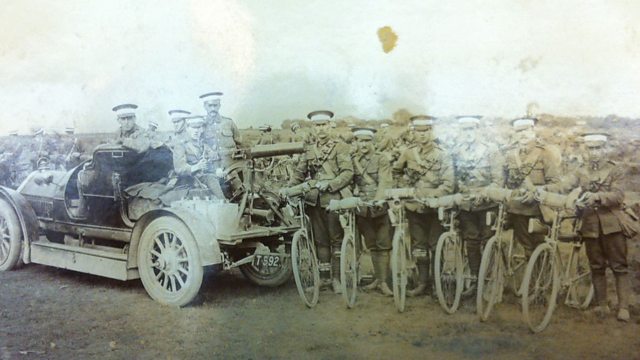Churston, Devon: Cycling Soldier into Battle by Bike
Defending the coastline and seeing the war on land, at sea and in the air from the saddle
Devon’s cycling soldiers defended the country’s coastline during World War One. They saw the war on land, at sea and in the air – from the saddles of their bikes.
The county’s cyclist battalion was established in 1908 (as part of the Territorial Force), and by the start of the war, it was one of 14 cycling battalions across the country.
Altogether 463 Devon cyclists were mobilised in August 1914. They left their annual training camp in Churston, and headed initially for Exeter, then to Yorkshire and Northumberland. Their mission was coastal defence – by bike.
The 7th Cyclist Battalion of the Devonshire Regiment was stationed nearby and helped with the rescue when the first hospital ship – Rohilla – ran aground near Whitby in October 1914.
Devon’s cycling soldiers also witnessed the bombardment of Hartlepool in December 1914, and Zeppelin attacks in Suffolk in spring 1916.
Frank Day’s diaries (published as He Cycled to Battle by Anne Pilling) record his work for the battalion in coastal defence. On 4 October, 1914 he wrote:
‘We’re having a good time...but it’s hard work patrolling the sands all night long.’
Some of Devon’s cycling soldiers became part of the Army Cyclists’ Corps, whilst others joined infantry regiments and served overseas.
Devon’s cyclist battalion was disbanded in 1921.
Location: Churston Ferrers, Brixham, Torbay, Devon TQ5 0LL
Image: Churston cyclists, courtesy of Keep Museum
Duration:
This clip is from
Featured in...
![]()
����ý Radio Devon—World War One At Home
Places in Devon that tell a story of World War One
More clips from World War One At Home
-
![]()
The loss of HMY Iolaire
Duration: 18:52
-
![]()
Scotland, Slamannan and the Argylls
Duration: 07:55
-
![]()
Scotland Museum of Edinburgh mourning dress
Duration: 06:17
-
![]()
Scotland Montrose 'GI Brides'
Duration: 06:41







